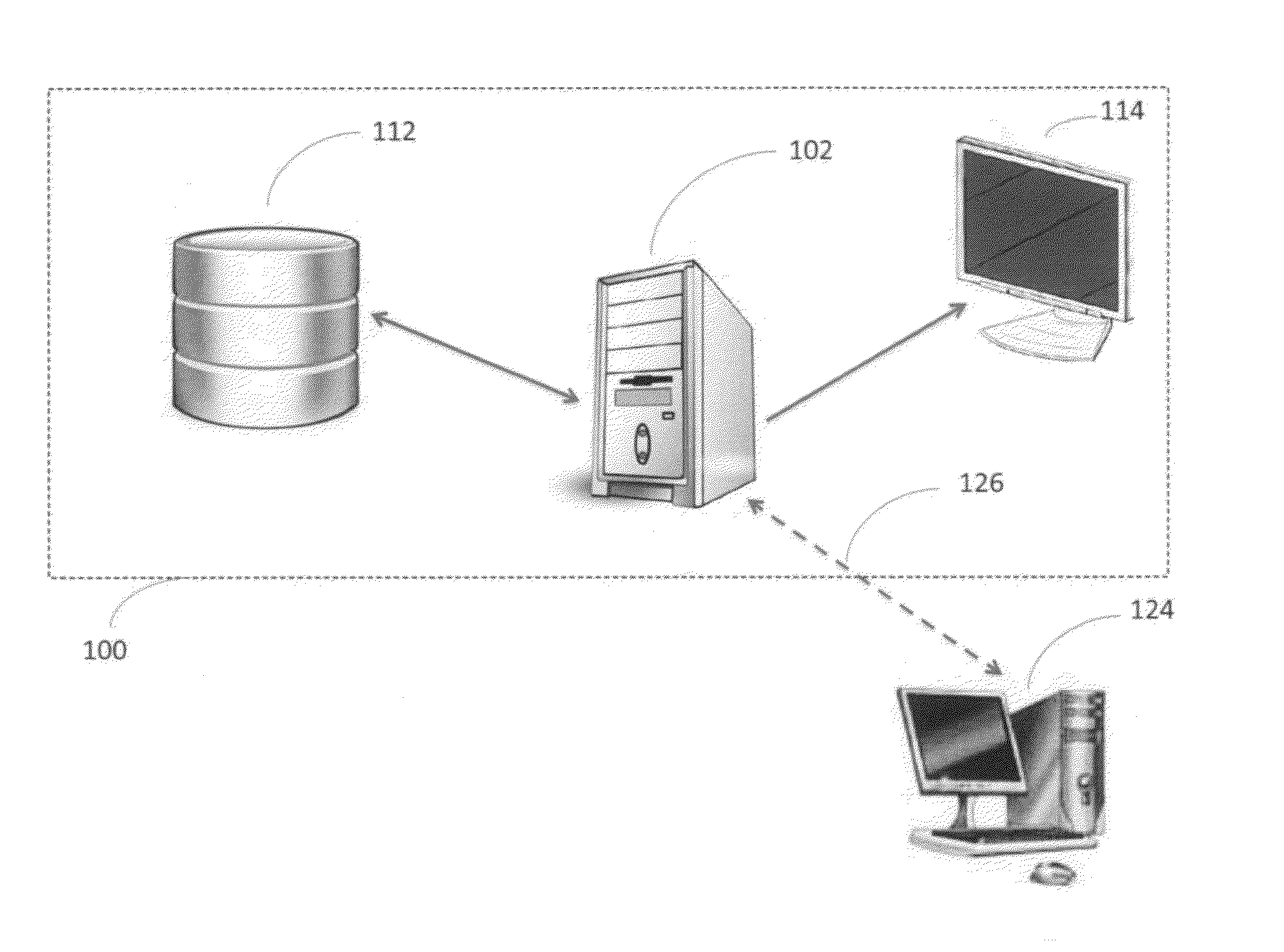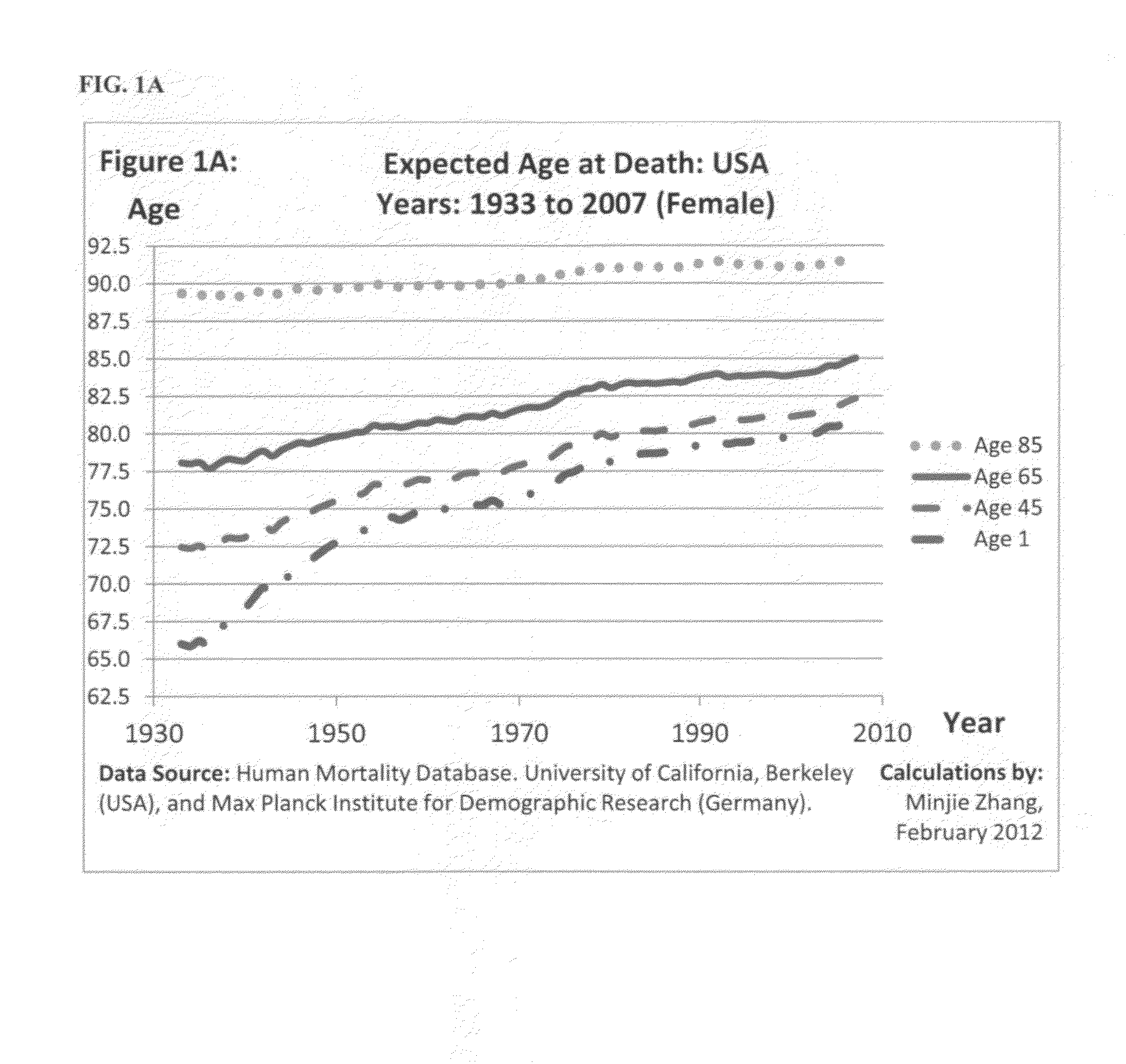Optimal portfolio withdrawal during retirement in the presence of longevity risk
a portfolio withdrawal and longevity risk technology, applied in the field of optimal portfolio withdrawal during retirement in the presence of longevity risk, can solve the problems of a number of arguably unrealistic assumptions, a few people that help people manage spending, and a small deviation (dispersion) around the average life expectancy
- Summary
- Abstract
- Description
- Claims
- Application Information
AI Technical Summary
Benefits of technology
Problems solved by technology
Method used
Image
Examples
examples
[0088]Table 1, in Appendix B, shows the optimal withdrawal amount for a retiree under different age and pension assumptions. At age 65, the retiree has $1,000,000 in assets in his portfolio of which $350,000 (35%) is invested in relatively risky assets and the remaining $650,000 (65%) is invested in relatively safe assets. The portfolio is assumed to grow at a rate of 3.9%. The retiree's level of longevity risk aversion risk aversion (gamma) is assumed to be 2.14 units. All of this is assuming the real expected rate of return on a portfolio of relatively risky assets is 5.5%, the standard deviation of return on that portfolio is 20%, and the valuation rate is 2.5%.
[0089]At age 65, assuming no pension, our retiree would be advised to withdraw $61,920 from his retirement portfolio. At age 80, the same retiree would have $590,000 remaining in his portfolio (not displayed in table and assuming market conditions remain constant) and would be advised to withdraw $53,940 from the portfolio...
PUM
 Login to View More
Login to View More Abstract
Description
Claims
Application Information
 Login to View More
Login to View More - Generate Ideas
- Intellectual Property
- Life Sciences
- Materials
- Tech Scout
- Unparalleled Data Quality
- Higher Quality Content
- 60% Fewer Hallucinations
Browse by: Latest US Patents, China's latest patents, Technical Efficacy Thesaurus, Application Domain, Technology Topic, Popular Technical Reports.
© 2025 PatSnap. All rights reserved.Legal|Privacy policy|Modern Slavery Act Transparency Statement|Sitemap|About US| Contact US: help@patsnap.com



